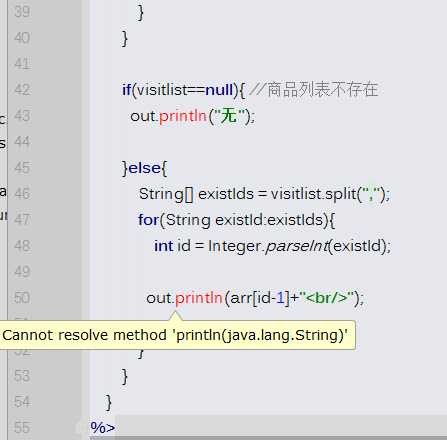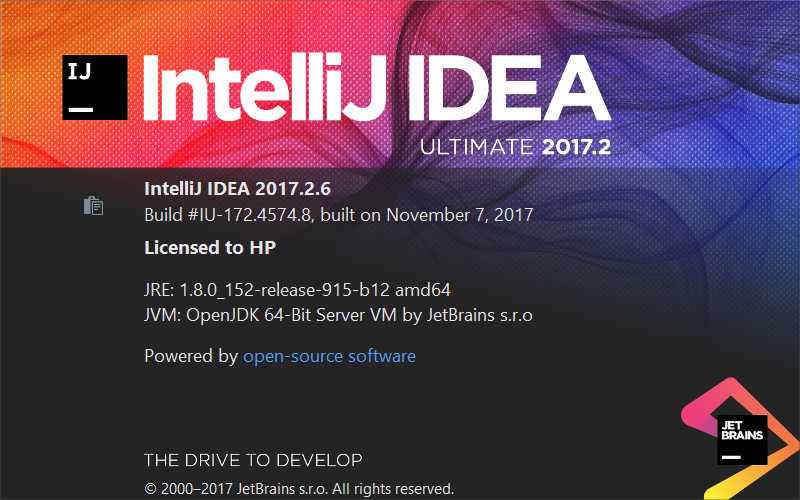json配置文件怎么用_json请求
大家好,我是编程小6,很高兴遇见你,有问题可以及时留言哦。
JSON(JavaScript Object Notation)是一种轻量级的 数据交换格式,易于人类读写,也易于机器解析和生成。
JSON 采用完全独立于语言的文本格式,类似于 XML,但比 XML 更加简洁优雅,常被用做 配置文件。
JSON 基本语法规范
- JSON 文件的扩展名是
.json - JSON 文本的 MIME 类型是
application/json - JSON 是一个键值对(key/value)的集合,所有数据都保存在一个 JSON 对象中,该对象以左括号(
{)开始,以右括号(})结束,每个 key 后跟一个冒号(:),key 与 value 之间使用逗号(,)分隔。- 键(key)的数据类型是字符串,必须包裹在双引号中(忘了给 Key 加双引号或者是把双引号写成单引号是常见错误)。
- 值(value)可以是这些类型:String、Number、Boolean、Object、Array、null。
{
"description": "这是一个 JSON 对象",
"sites": [
{ "name": "Apple", "url": "www.apple.com" },
{ "name": "Google", "url": "www.google.com" },
{ "name": "Facebook", "url": "www.facebook.com" }
]
}
需要注意的是:JSON 文件中无法使用注释,试图添加注释将会引发报错。但是可以通过变通的方法添加注释,如:
{
"description": "项目配置文件",
"version": "1.0.0",
"author": "Tom"
}
{
"======== common ========": "通用模块",
"common": {
"key1": "value1",
"key2": "value2"
},
"========= user =========": "用户模块",
"user": {
"key1": "value1",
"key2": "value2"
}
}
JavaScript 对 JSON 的支持
JSON 语法是 JavaScript 语法的子集,当在 JavaScript 中使用 JSON 时,JSON 是其内置的功能。JSON 对象包含两个方法:用于解析 JSON 的 parse() 方法,以及将对象转换为 JSON 字符串的 stringify() 方法。除了这两个方法外,JSON 这个对象本身并没有其他作用,也不能被调用或者作为构造函数调用。
JSON 在 JavaScript 中的引用十分广泛,例如:从 Web 服务器上获取 JSON 数据,然后将该 JSON 数据转换为 JavaScript 对象进行使用。
兼容性:IE8 以下的浏览器不支持,对于较老的浏览器,可使用 JSON2 github.com/douglascroc…
JSON.parse()
JSON.parse() 函数用于 JSON 解析,即将一个 JSON 字符串转换成一个 JavaScript 对象。
语法:JSON.parse(text[, reviver])
- text:必需,一个有效的 JSON 字符串。
- reviver:可选,一个结果转换函数,将为对象的每个成员调用此函数。
const jsonStr = '{ "name": "Tom", "birthday": "2020-01-01" }'
const jsObj1 = JSON.parse(jsonStr)
const jsObj2 = JSON.parse(jsonStr, (key, value) => {
if (key === 'birthday') {
return new Date(value).getTime()
} else {
return value
}
})
console.log(jsObj1) // {name: "Tom", birthday: "2020-01-01"}
console.log(jsObj2) // {name: "Tom", birthday: 1577836800000}
JavaScript 内置的全局函数
eval()可以用来计算,也可以解析 JSON,如eval('(' + jsonStr + ')'),但由于该函数是不安全的,不推荐使用。
JSON.stringify()
JSON.stringify() 函数用于 JSON 序列化,即将一个 JavaScript 对象转换成一个 JSON 字符串。
语法:JSON.stringify(value[, replacer[, space]])
- value:必需, 要转换的 JavaScript 值(通常为对象或数组)。
- replacer:可选。用于转换结果的函数或数组。
- 如果 replacer 为函数,则
JSON.stringify将调用该函数,并传入每个成员的键和值。使用返回值而不是原始值。如果此函数返回undefined,则排除成员。根对象的键是一个空字符串。 - 如果 replacer 是一个数组,则仅转换该数组中具有键值的成员。成员的转换顺序与键在数组中的顺序一样。当 value 参数也为数组时,将忽略 replacer 数组。
- 如果 replacer 为函数,则
- space:可选,将缩进、空格和换行符添加到返回的 JSON 文本中,使其更易于阅读。
- 如果 space 是一个数字,则返回值文本在每个级别缩进指定数目的空格(如果 space 大于 10,则只缩进 10 个空格)。
- space 也可以使用非数字,如:
\t。
const jsObj = { name: 'Tom', birthday: '2020-01-01' }
const jsArr = ['Google', 'Runoob', 'Taobao', 'Facebook']
const jsonStr1 = JSON.stringify(jsObj) // 序列化 JS 对象
const jsonStr2 = JSON.stringify(jsArr) // 序列化 JS 数组
const jsonStr3 = JSON.stringify(jsObj, ['name'])
const jsonStr4 = JSON.stringify(jsObj, (key, value) => {
if (key === 'birthday') {
return new Date(value).getTime()
} else {
return value
}
}, 4)
console.log(jsonStr1) // {"name":"Tom","birthday":"2020-01-01"}
console.log(jsonStr2) // ["Google","Runoob","Taobao","Facebook"]
console.log(jsonStr3) // {"name":"Tom"}
console.log(jsonStr4)
// {
// "name": "Tom",
// "birthday": 1577836800000
// }
当我们直接进行对象拷贝时,实际上是拷贝了该对象的引用地址,改变其中一个对象,另外一个也会改变。我们可以使用
JSON.parse(JSON.stringify(obj))来进行 对象深拷贝,但是这种方式有一定局限性,例如无法正确处理 Date、RegExp、Error 等对象。
JSON Schema
- JSON Schema 官网 json-schema.org/
- JSON Schema Store github.com/schemastore…
JSON Schema 描述了 JSON 文件的数据格式、值集、默认值和描述,可以帮助编辑器(如 IDEA、WebStorm、VS Code 等)进行智能提示和验证功能。JSON Schema Store 中给提供了 300 多种 JSON 文件的 JSON Schemas 定义,可以直接使用,你也可以定义自己的 JSON Schemas 格式。
下面演示如何在 VS Code 中管理 JSON Schema:
在 VSCode 中配置 JSON schema 后,可以在写 JSON 的时候出现智能提示:
"json.schemas": [
{
"fileMatch": [".prettierrc"],
"url": "http://json.schemastore.org/prettierrc"
}
]
或者在 JSON 文件内部定义(可能会验证失败):、
{
"$schema": "http://json.schemastore.org/coffeelint",
"line_endings": "unix"
}
JSON schema 加载成功:
JSON schema 加载失败:
JSON 扩展库
JSONC(JSON with Commits)
JSONC 是 JSON 的超集,支持单行和多行注释,提高了 JSON 文件可读性。VS Code 在其配置文件(例如 settings.json、keybindings.json、launch.json 等)中也使用此格式。
相关库:
- github.com/sindresorhu…
- github.com/microsoft/n…
- github.com/onury/jsonc
{
// comment
"data": /* comment */ "value"
}
JSON5
github.com/json5/json5
JSON5 是 JSON 的超集,让 JSON 语法更接近 JavaScript 语法。主要扩展了以下功能:
- 支持单行和多行注释(comments)。
- 键名(name)不需要用双引号引起来了。
- 字符串可以用单引号(single quoted)引起来了。
- 字符串可以包含字符转义符(character escapes),并且可以通过转义换行符来跨越多行。
- 对象和数组支持尾随逗号(trailing comma)。
示例:
{
// comments
unquoted: 'and you can quote me on that',
singleQuotes: 'I can use "double quotes" here',
lineBreaks: "Look, Mom! \ No \\n's!",
hexadecimal: 0xdecaf,
leadingDecimalPoint: .8675309,
andTrailing: 8675309.,
positiveSign: +1,
trailingComma: 'in objects',
andIn: ['arrays',],
"backwardsCompatible": "with JSON",
}
如何使用?
JSON5 API 与标准的 JSON API 兼容,也提供了 parse() 和 stringify() 两个方法。
Browsers:
<script src="https://unpkg.com/json5@^2.0.0/dist/index.min.js"></script>
Node.js:
npm install json5
const fs = require('fs')
const path = require('path')
const JSON5 = require('json5')
const filePath = path.join(__dirname, '../assets/test.json5')
const content = fs.readFileSync(filePath, 'utf-8')
JSON5.parse(JSON5.stringify(content))
另外,推荐安装 VS Code 插件 JSON5 syntax,它提供了对 .json5 文件的语法高亮支持。
Hjson
github.com/hjson/hjson
Hjson 是 JSON 的语法扩展,支持以下特性:
- 支持注释
- 支持多行文本
- 支持尾逗号,并且尾逗号是可选的
- 键名可以不带引号
- 键值是字符串时可以不带引号
相关库:
- hjson-js github.com/hjson/hjson…
{
// use #, // or /**/ comments,
// omit quotes for keys
key: 1
// omit quotes for strings
contains: everything on this line
// omit commas at the end of a line
cool: {
foo: 1
bar: 2
}
// allow trailing commas
list: [
1,
2,
]
// and use multiline strings
realist:
'''
My half empty glass,
I will fill your empty half.
Now you are half full.
'''
}
配置文件解决方案
配置文件是一种非常基础的文件格式,它不需要像其他格式那样复杂,如数据文件格式(如 SQLite)、文档文件格式(如 Markdown)、编程语言格式(如 JavaScript)、甚至二进制文件格式(如 PNG)等。
配置文件最基本的诉求就是易读、易编写和易解析,但就这样一种简单的需求,却长期以来一直没有一种足够好的通用文件格式。
JSON
JSON(.json)是一种非常友好的数据传输格式,在前端项目中被大量使用,如 npm 和 yarn 使用的 package.json。
JSON 不支持注释、不支持多行文本、不支持尾逗号等特性,如果需要,可以使用 JSON 扩展库 JSON5 或 JSONC。
{
"description": "This is an example.",
"env": {
"node": false,
"browser": true
},
"sites": [
{ "name": "Apple", "url": "www.apple.com" },
{ "name": "Google", "url": "www.google.com" },
{ "name": "Facebook", "url": "www.facebook.com" }
]
}
XML
XML(.xml)是一种较为通用的配置文件格式,易读、易解析,支持嵌套结构,支持数组形式。可以被大多数编程语言使用,在 Java Spring 项目中被大量使用。
与 JSON 相比,XML 不够优雅,数值需要被包裹在开始标签和结束标签直接,文档 size 也更大。JSON 读写速度更快,可以直接在 JS 中使用,XML 需要使用 XML 解析器来解析。
<?xml version="1.0" encoding="UTF-8" ?>
<description>This is an example.</description>
<env>
<node>false</node>
<browser>true</browser>
</env>
<sites>
<name>Apple</name>
<url>www.apple.com</url>
</sites>
<sites>
<name>Google</name>
<url>www.google.com</url>
</sites>
<sites>
<name>Facebook</name>
<url>www.facebook.com</url>
</sites>
YAML
github.com/yaml/yaml
YAML(.yml)是一种“现代化”的配置文件格式,它使用严格的缩进语法表示层级关系,支持注释,支持对象、数组等数据结构,也支持引用文件。YAML 的主要缺点是规范比较复杂,不同的实现之间可能存在不一致的情况。
YAML 配置文件在 CI/CD 项目中会经常遇到(如 Travis CI、Circle CI、Docker Compose 等)。
# This is a TAML document
description: This is an example.
env:
node: false
browser: true
sites:
- name: Apple
url: www.apple.com
- name: Google
url: www.google.com
- name: Facebook
url: www.facebook.com
相关库:
- YAML github.com/eemeli/yaml
- JS-YAML github.com/nodeca/js-y…
TOML
- GitHub github.com/toml-lang/t…
- 中文文档 toml.io/cn/v1.0.0-r…
TOML(.toml)也是一种“现代化”的配置文件格式,该格式易于阅读,也易于解析为多种语言的数据结构。
与 JSON 相比,TOML 支持注释;与 YAML 相比,TOML 更加简洁。
Gitlab Runner 的配置文件就是使用的 YAML 格式。
# This is a TOML document
title = "TOML Example"
[owner]
name = "Tom Preston-Werner"
dob = 1979-05-27T07:32:00-08:00
[database]
enabled = true
ports = [ 8001, 8001, 8002 ]
data = [ ["delta", "phi"], [3.14] ]
temp_targets = { cpu = 79.5, case = 72.0 }
[servers]
[servers.alpha]
ip = "10.0.0.1"
role = "frontend"
[servers.beta]
ip = "10.0.0.2"
role = "backend"
如何使用?
# https://github.com/BinaryMuse/toml-node
npm install toml
const fs = require('fs')
const path = require('path')
const toml = require('toml')
const filePath = path.join(__dirname, '../assets/test.toml')
const content = fs.readFileSync(filePath, 'utf-8')
toml.parse(content)
另外,推荐安装 VS Code 插件 Better TOML,它提供了对 .toml 文件的语法高亮支持。
HOCON
github.com/lightbend/c…
HOCON(Human-Optimized Config Object Notation)是一个灵活且易于使用的配置文件格式,甚至还支持重用和继承等 OO 语言才支持的功能,常被用于 Nginx、Java、Scala 等项目中,文件扩展名是 .conf。
jdbc {
diver = "com.mysql.jdbc.Driver"
url = "jdbc:mysql://host:3306/database?useUnicode=true&characterEncoding=UTF-8"
username = "root"
password = "1234"
}
properties
properties(.properties)是一种非常简单的配置文件格式,主要在 Java 相关技术中用来存储应用程序的可配置参数。
每个参数被存储为一个“键值对”,每一行通常存储单个参数。
jdbc_diver="com.mysql.jdbc.Driver"
jdbc_url=jdbc:mysql://localhost:3306/test
jdbc_username=root
jdbc_password=1234
INI
INI(.ini)是一种非常原始的配置文件格式,在 Windows 操作系统中非常常见。
它只适用于非常简单的配置,最多只能解决一层嵌套,一旦需要多层嵌套,或需要数组时,就力不从心了。
; 最简单的结构
a = a;
b = b; 这些等号后面的值是字符串(句末分号不是必须的;它后面的都是注释)
; 稍微复杂一点的单层嵌套结构
[c]
x = c.x
y = c.y
[d]
x = d.x
y = d.y
一些实用的在线工具
- JSON 格式化、压缩、验证、JSON 互转 c.runoob.com/front-end/5…
- JSON-XML 互转 www.bejson.com/xml2json/
- JSON-YAML 互转 www.bejson.com/validators/…
- JSON格式化 tool.css-js.com/jsonformat.…
参考资料
- JSON www.json.org/json-zh.htm…
- JSON 教程 | 菜鸟教程 www.runoob.com/json/json-t…
- JSON - JavaScript | MDN developer.mozilla.org/zh-CN/docs/…
- YAML 语言教程 - 阮一峰的网络日志 www.ruanyifeng.com/blog/2016/0…










